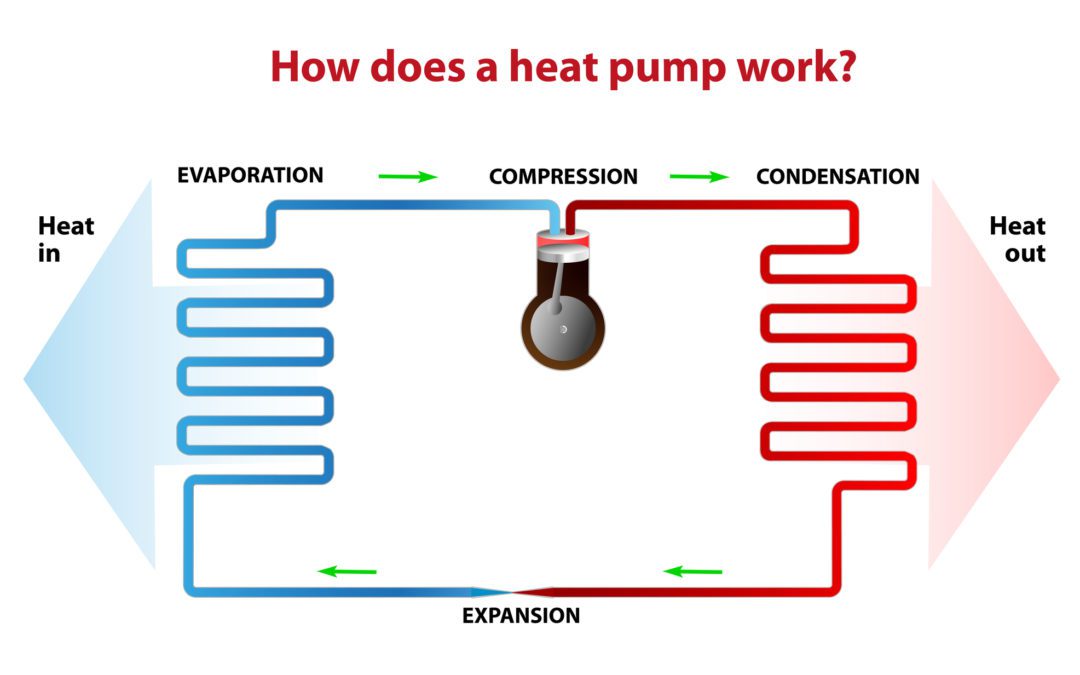What is a heat pump, and how does it work?
When homeowners or building managers are faced with the dilemma of cooling down their interior space in the summer, most of them consider installing an air conditioner. If budgets are an issue, then the next best option is window fans. When you need a piece of equipment to assist in the heating and cooling of your property, you might consider a heat pump system. At this point, you’re probably asking yourselves, how does a heat pump work?
Instead of installing separate heating and cooling systems that demand significant investment, heat pumps are reliable technology that can supply crucial heat in the winter, cooling in the summer, and heat water for the home. Additionally, the device uses far less energy to move heat from one location to another than your traditional air conditioner or heater. Typically, a heat pump draws heat from the ground to distribute throughout an interior space and vice versa. As a result, heat pumps are incredibly efficient since they transfer heat instead of burning fuel to create the desired effect.
Heat pumps are an excellent consideration for new homes and remodels as the costs associated with moving from an air conditioner only to a heat pump are relatively low. Several types of heat pumps exist, but they all operate on the same principle. Heat naturally flows downwards, which means it moves from places with high temperatures to locations with lower temperatures. The heat source can either be the ground or air into a heat sink which is your home.
A Heat Pump Heats and Cool Outside Air
A typical heat pump is the air-source heat pump which uses the air from outside and transfers it to the inside using refrigerant-filled coils – a scenario that you’d find at the rear of your fridge. The air-source pump is straightforward in that it contains two fans, a reversing valve, refrigerator coils, and a compressor. The reversing valve allows the heat pump to remove heat from the interior space and dump it outside. Once the heat is released, the refrigerant cools down, and the process repeats itself until your room is cool.
Ground-source heat pumps are slightly different in that they absorb heat from the ground or water from beneath the surface and transfer it indoors or the other way around when you require. The transfer takes place within buried pipes filled with either water or refrigerant. For this reason, these pipes are either a closed or open-loop system. For the former, the same water or refrigerant is circulated through the pipes while the latter uses an underground water source such as a well or built-up lake. Heat is extracted from the water as the water returns to the lake.
Apart from the types of heat pumps to consider, other factors determine what experience you’re in for. Heat pumps have efficiency ratings through SEER and HSFP – higher ratings are better and indicate a more efficient unit.
What’s the difference between SEER and HSFP?
SEER refers to the seasonal energy efficiency rating, which measures how much energy the system uses to pump heat outside in cooling mode divided by the number of watts it uses. Generally, a SEER rating between 14 and 18 is optimal.
HSFP addresses the heating seasonal performance factor. This rating deals with the ratio of energy pumped indoors for heating compared to the energy consumed for heating. This number takes into account supplemented heating needs and the energy it requires to defrost the system. Ideally, you want to find a unit of an HSFP rating between eight and ten.
Heat pumps are generally beneficial to homeowners in reducing energy bills, but they do have some limitations. In a climate where the outdoor air temperature regularly flirts with the freezing point, a heat pump may not be as valuable as in areas with average temperatures. It’s essential to note that there’s heat in the air outside that the pump can use for the interior even in a cold climate.
Additionally, the heat that you enjoy from a heat pump is less intense than what a gas or oil furnace produces. Furthermore, it distributes warmth evenly throughout a space, meaning you won’t have to endure cold spots.
If you rely on the heat pump frequently, you must have a professional advise you and inspect the system often. Change the filter once a month at the very least. You could get away with replacing the filter once every three months if you don’t constantly depend on the heat pump. Make sure you keep the fans and coils clean and free from dust, dirt, and debris, all of which can negatively affect the heat pump’s performance. Ideally, you’d require an HVAC technician to look at the system after every year or two, depending on your use.



